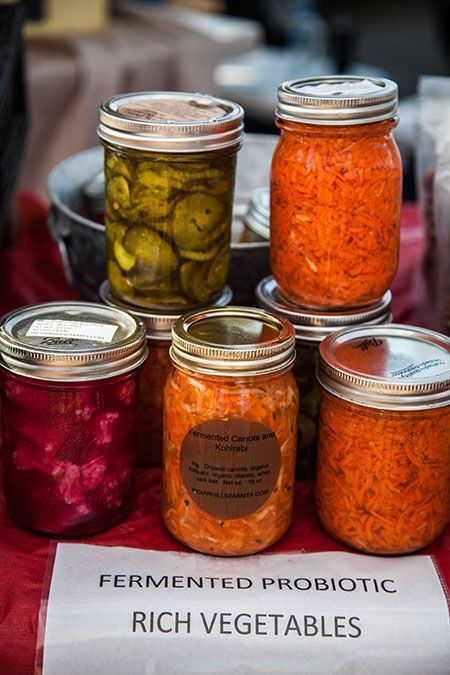“The flavorful space between fresh and rotten.” --Sandoor Katz
Fermentation is an ancient way of preserving food and its nutrients for months past the date of harvest. Chemically, it is the breaking down of foods by bacteria, yeasts, molds or other microorganisms. Many of the foods we consume every day are fermented, including: yogurt, cheese, coffee, bread, wine, beer, soy products, vinegar, cured meats and some kinds of pickles.
Fermented foods containing live Lactobacillus bacteria (lacto-fermented foods) are good for digestive health, immune function, and general well-being. Lacto-fermentation is easy: all it takes is vegetables/fruits, salt, water and time. Lacto-fermented foods include dill pickles (some kinds), kimchi and sauerkraut -- we call these foods pickles, though not all pickles are ferments.

